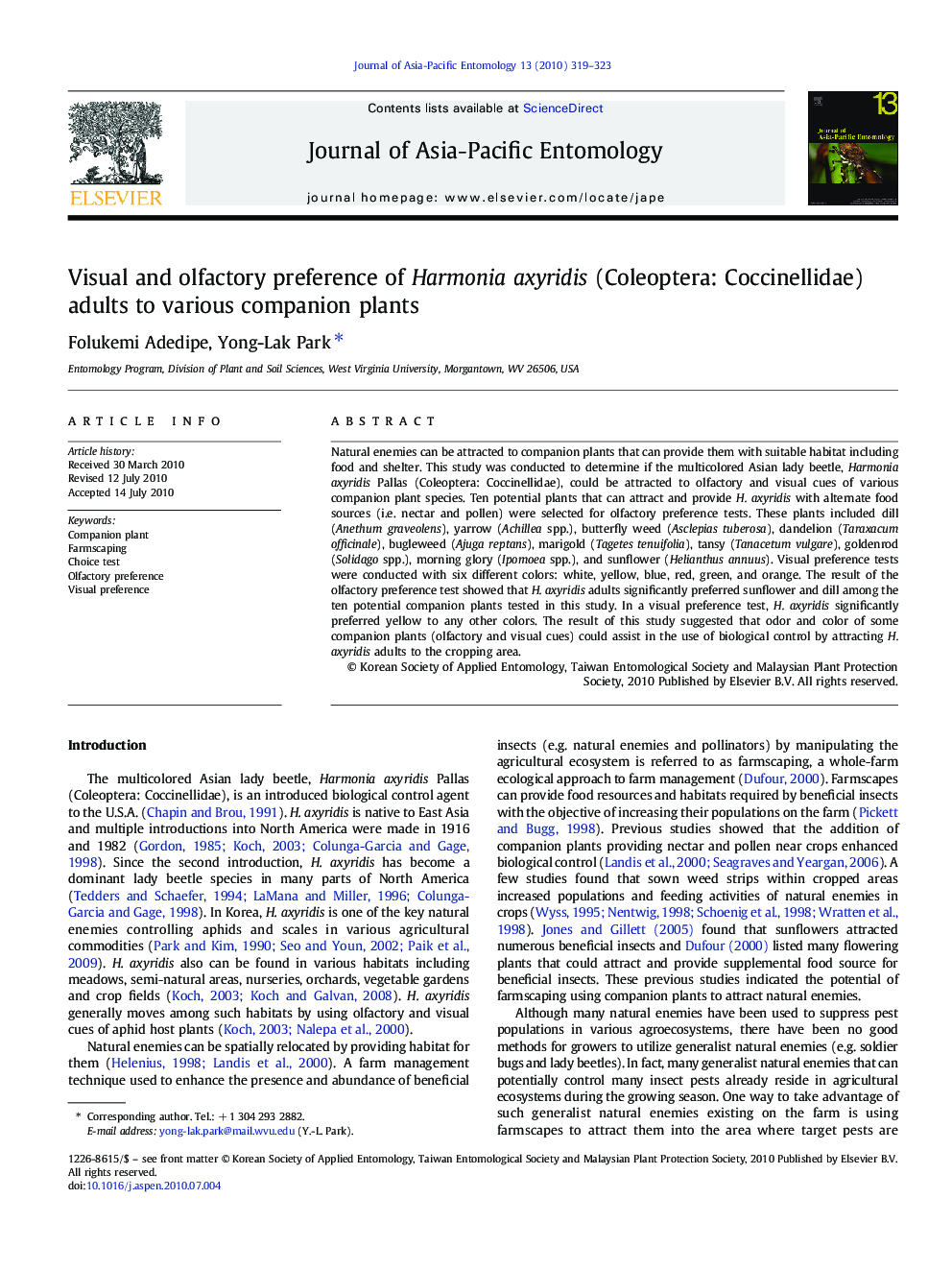| Article ID | Journal | Published Year | Pages | File Type |
|---|---|---|---|---|
| 4524825 | Journal of Asia-Pacific Entomology | 2010 | 5 Pages |
Natural enemies can be attracted to companion plants that can provide them with suitable habitat including food and shelter. This study was conducted to determine if the multicolored Asian lady beetle, Harmonia axyridis Pallas (Coleoptera: Coccinellidae), could be attracted to olfactory and visual cues of various companion plant species. Ten potential plants that can attract and provide H. axyridis with alternate food sources (i.e. nectar and pollen) were selected for olfactory preference tests. These plants included dill (Anethum graveolens), yarrow (Achillea spp.), butterfly weed (Asclepias tuberosa), dandelion (Taraxacum officinale), bugleweed (Ajuga reptans), marigold (Tagetes tenuifolia), tansy (Tanacetum vulgare), goldenrod (Solidago spp.), morning glory (Ipomoea spp.), and sunflower (Helianthus annuus). Visual preference tests were conducted with six different colors: white, yellow, blue, red, green, and orange. The result of the olfactory preference test showed that H. axyridis adults significantly preferred sunflower and dill among the ten potential companion plants tested in this study. In a visual preference test, H. axyridis significantly preferred yellow to any other colors. The result of this study suggested that odor and color of some companion plants (olfactory and visual cues) could assist in the use of biological control by attracting H. axyridis adults to the cropping area.
